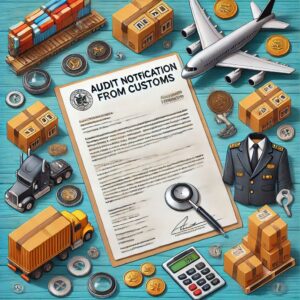Let’s delve into the intricate world of air cargo acceptance procedures, shedding light on the processes that ensure smooth operations and timely deliveries. In the realm of global logistics, where speed and reliability are paramount, air cargo stands out as a crucial player. Facilitating the movement of goods across vast distances in record time, air cargo demands meticulous handling right from the moment of acceptance.
Cargo operations should adhere to the IATA Cargo Handling Manual and local regulations, which provide comprehensive guidelines for acceptance, handling, and related processes. Personnel must also comply with any specific rules stipulated for origin and destination locations.
Understanding Air Cargo Acceptance
Air cargo acceptance is the pivotal first step in the journey of goods through the skies. It involves a series of steps and checks to ensure that shipments are compliant with regulations, properly documented, and ready for safe transport. Whether you’re a seasoned logistics professional or new to the industry, understanding these procedures is essential for navigating the complexities of international trade.
Subscribe to the Ex-works24/7 newsletter
Documentation: Air Cargo Acceptance Backbone
At the heart of air cargo acceptance lies documentation. Accurate and complete paperwork is not just a formality but a legal requirement enforced by customs authorities worldwide. Key documents typically include:
Air Waybill (AWB): This serves as the contract of carriage between the shipper and the airline. It contains essential details about the shipment, such as consignee information, shipping terms, and handling instructions.
Commercial Invoice: Provides a detailed list of the goods being shipped, their value, and other commercial terms. This document is crucial for customs clearance and determining applicable duties and taxes.
Packing List: Details the contents of each package within the shipment, including dimensions, weights, and descriptions of goods.
Export Licenses and Certificates: Required for certain goods to comply with international trade regulations.
Ensuring these documents are accurate and readily available streamlines the acceptance process, preventing delays and potential penalties.
Physical Inspection and Security Screening
Once the paperwork is in order, the physical inspection and security screening process begins. This step is crucial for ensuring that only authorized and safe goods are loaded onto aircraft. Key aspects include:
Cargo Dimensions and Weight: Verification to ensure compliance with aircraft specifications and loading capacity.
Security Screening: X-ray and other screening methods are employed to detect prohibited items or potential threats.
Temperature Control: For perishable goods, temperature monitoring and control measures are implemented to maintain product integrity.
Special Cargo Handling
Not all air cargo is created equal. Special handling is required for certain categories, such as:
Dangerous Goods: Goods classified as hazardous require special packaging, labeling, and documentation to comply with strict safety regulations.
Perishable Goods: Temperature-sensitive items like pharmaceuticals or fresh produce demand expedited handling and refrigeration facilities.
Valuable Cargo: High-value items necessitate enhanced security measures to safeguard against theft or damage.
Electronic Messaging
The process can be paperless, with electronic messages facilitating communication between stakeholders. These messages include:
- Shipper requesting booking with shipment information and security details.
- Freight forwarder planning the shipment and confirming the booking.
- Transmitting AWB data to the carrier.
- Receiving the shipment from the freight forwarder.
- Performing shipment acceptance checks.
- Transmitting house waybill data (XFZB/FHL) to the carrier.
In conclusion, the air cargo acceptance procedure is a meticulously orchestrated process aimed at ensuring the swift, secure, and efficient transportation of goods across the globe. From meticulous documentation and rigorous inspections to specialized handling of diverse cargo types, each step plays a crucial role in maintaining the integrity and reliability of air cargo operations.
As logistics continue to evolve in response to global demands, staying informed about these procedures remains pivotal for professionals across the supply chain. By mastering the intricacies of air cargo acceptance, we can all contribute to the seamless movement of goods that fuels international trade and connects economies worldwide.
Frequently
Asked Questions
To board the air cargo express, your shipment must be properly packaged, labeled, and documented. Think of it as preparing for a royal ball: your cargo needs the right attire (packaging), an invitation (documentation), and a name tag (labeling). And remember, no unruly guests—hazardous materials must play by stricter rules!
Packaging your cargo is akin to dressing a toddler—ensure it’s snug, secure, and ready for a bumpy ride! Choose materials that can withstand temperature changes, pressure, and the occasional "oops" moment during transit. Remember, if it looks like it might pop out of its box and start a dance party, you might need a sturdier option!
Dangerous goods must be declared and classified according to international regulations (such as IATA). Special documentation and packaging requirements must be followed, and acceptance staff must be trained in handling hazardous materials.
Air freight forwarders facilitate the transportation of cargo by coordinating documentation, packaging, and compliance with regulations. They ensure that shipments are prepared correctly for acceptance by the airline.
First, don’t panic—this isn’t a horror movie! Typically, you’ll be informed of the reason for rejection, and then it’s time to fix it. Whether it’s re-packaging, obtaining additional documentation, or simply removing items that refuse to comply with air travel rules, take it step by step. Just remember, every great adventure has a few plot twists!




